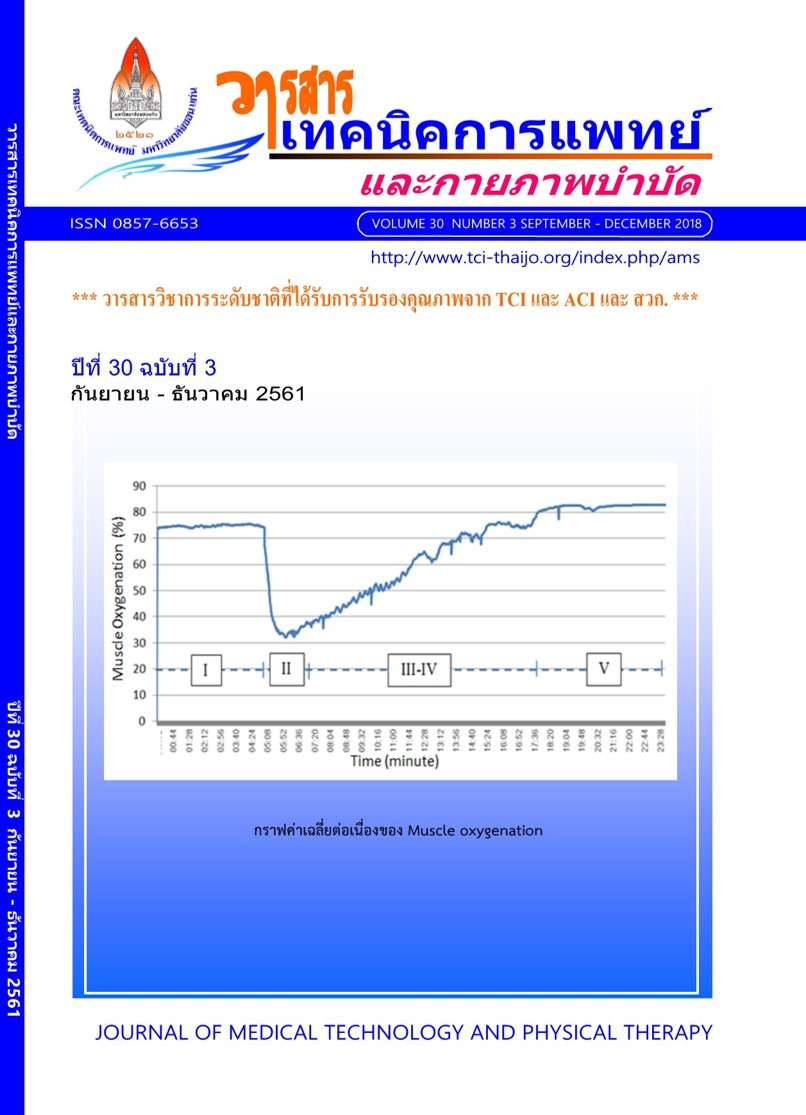The benefit of positive predictive value of CD4+ T cells derived from CBC parameters in HIV infected patients in Sirinthorn Hopspital, Khon Kaen Province
Main Article Content
Abstract
HIV is a major problem in the world. This infection causes the CD4+ T cell to be damaged and the functioning of the CMI decreases. CD4+ T cell is used as a tracer for disease diagnosis and evaluation. However, the detection of CD4+ T cells using the flow cytometry system is only used in large hospitals and there is limited use in community hospitals. Therefore, the researchers sought to determine the positive predictive value (PPV) of CD4+ T cells from the total lymphocyte count (TLC) to help in the treatment planning and to prompt patients to receive the drug. Prevention of opportunistic infections in patients with CD4+ T cell <200 cells / mm3. Researchers use the database from the laboratory, Sirindhorn Hospital, Khon Kaen province. Data collection for CD4+ T cell was performed by FACScan, CBC and TLC 2,640 samples between the years 2013 to 2014. Calculate TP, TN, FP, FN, PPV, NPV, sensitivity and specificity at various TLC levels. Statistics used in data analysis by SPSS include: correlation coefficient (r), statistical inference for paired samples (T test), and Distribution Test. The statistically significant was set at p-value <0.05. The results showed that the r values between TLC & PPV = -0.977. The y-intercept and slope were 122.178 and -0.042, respectively. The adjustment of PPV resulted in the strong regression correlation as shown by the r value = 0.977. The comparative means of TLC and adj-PPV were not statistically significant (p = 0.856). These parameters were used interchangeably. In conclusion, this study revealed the strong regression correlation of Adj-PPV and TLC may be used to predict the amount of CD4 T cells in HIV-infected individuals. These could help clinical management of AIDS in healthcare providers, particularly, in the hospital from remote areas that did not have flow cytometry instrument.


